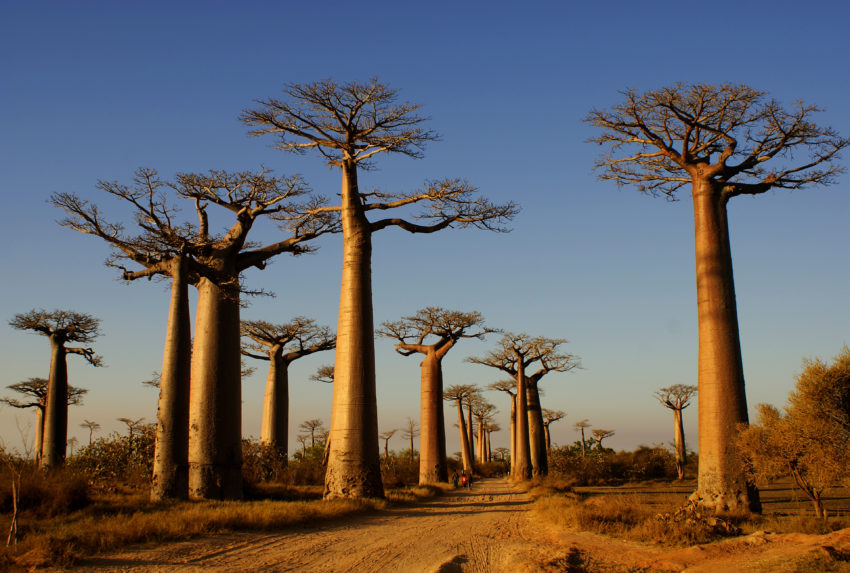A couple of weeks ago I read a book called the Hidden Life of Trees by Peter Wohlleben, beautifully written and a fascinating insight into the secret world of trees; getting beneath the bark, so to speak. The author, a forester, shares his personal experiences alongside ground-breaking scientific research, to tell of how trees communicate, how they support each other, and how they, like us, feel things.
My love of trees came to the surface in Africa. I returned from my first trip to the Tarangire National Park in Tanzania with a memory card full of wildlife, and these funny upside down looking trees. The beautiful baobab. Native to Africa and Australia, they were around before the continents divided. Many people will recognise them from iconic photos of the ‘Avenues des Baobabs’ in Madagascar; or in the eponymously named Disney movie.
The baobab tree, or ‘Tree of Life’ as it’s known to some, can live for 5000 years and grow up to 30 metres tall. To many, it’s sacred tree, and a spiritual hub for rural communities in Africa. What I only learned last week, is that the fruit produced by the baobab has had a promotion – among those in the know, here in the UK – to the King of Superfoods. Indeed, such is the passion behind it a campaign to get it out to everyone everywhere is in full cry. It’s hard coconut-like shell simply has to be harvested, cracked open and sieved to form a natural powder that requires no additives or preservatives. It pretty much prepares itself, being the only fruit that dehydrates whilst hanging on the tree’s branch. The powder that is citrus in taste, delicious in smoothies and many other recipes, is 100% natural. It’s health benefits are impressive; rich in Vitamin C (six times that of an orange), calcium, packed with antioxidants and high in fibre, and much, much more.
I love the fact that women in rural communities across Africa are harvesting a naturally produced crop (there are currently no baobab plantations), and in doing so, are supporting many thousands of households. It feels to me like we’re finding more and more ways to share the world’s resources. I have always loved the thought or belief that we, in the world, already have everything we need; we just need to work out how to get to and share our resources better. And from where I’m sitting, if an already existing crop of baobab fruit can be used to make us in the northern hemisphere healthier, while empowering and supporting rural households in Africa, and similarly nutritionally benefiting those households, that sounds to me like a winning partnership, and a great example of global communities supporting each other.
Experienced Africa travel consultant and fan of all things well-being, Sally Kirby writes for a number of travel-orientated outlets, and blogs at The Teal Journal.

Sources: www.aduna.com and www.bbc.co.uk/nature.life. To support the #makebaobabfamous campaign, share this blog and use the hashtag
